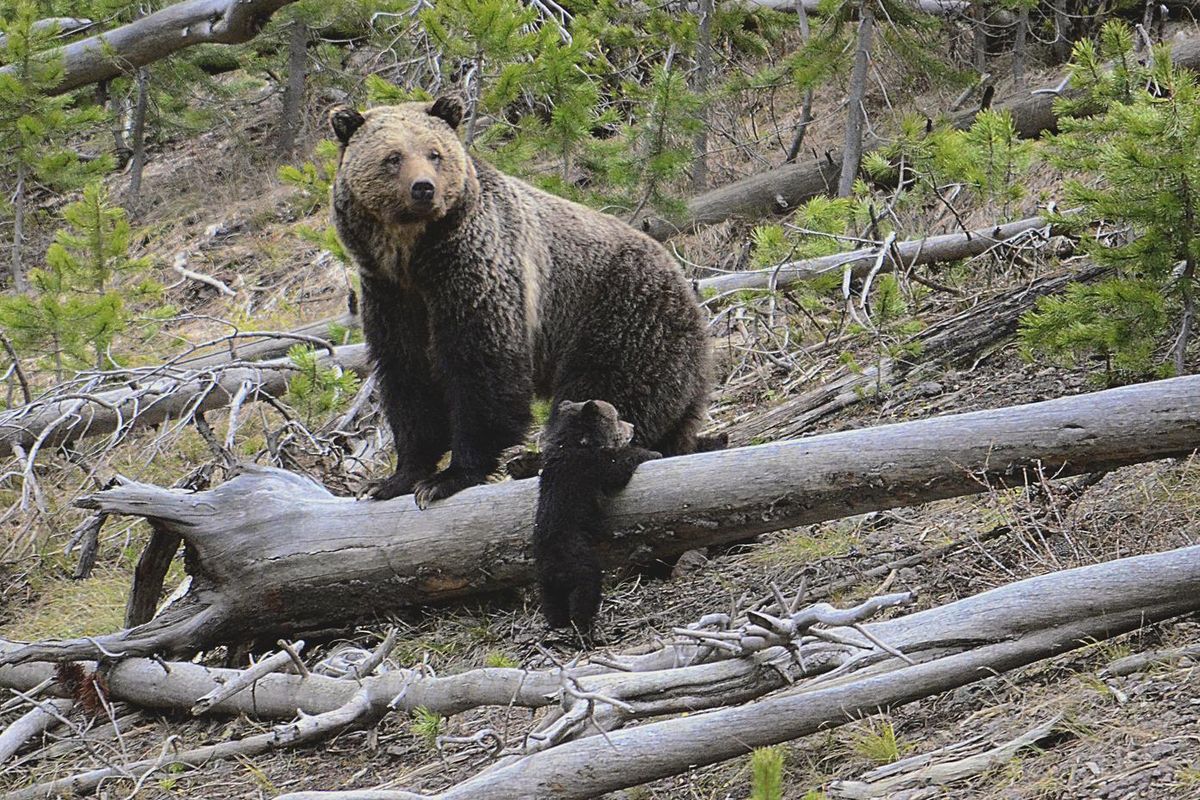Long-closed road bisecting grizzly habitat to reopen following national security concerns

A long-closed road bisecting important grizzly bear habitat north of Priest Lake will reopen in the name of national security.
On Friday, the U.S. Forest Service and the U.S. Department of Homeland Security announced the planned reopening of a portion of Bog Creek Road following years of discussion.
The road, a portion of which runs east to west through the Selkirk Mountains in Idaho, was closed in the late 1980s in an effort to protect endangered grizzly bears that roam the rugged, wild country between Upper Priest Lake and the Canadian border.
However, starting in 2013 the U.S. Border Patrol asked the U.S. Forest Service to reopen 5.6 miles of the road, citing “legitimate threats to border security.”
The Forest Service will move forward with plans to repair the road, which is overgrown with alders and other vegetation, following the Friday publication of the Record of Decision. Work will include installing six new culverts and replacing six of the 67 corrugated metal pipe culverts along the roadway. Officials say a culvert failure at one point caused a washout and has made the road impassable. Trees and brush also would be cut back along the road, which is in Boundary County.
The road will “not be open for public motorized use, but available for administrative use only to allow CBP to meet their statutory mission,” according to a Forest Service news release.
Opponents of the project are disappointed and contemplating legal action.
“This project will reduce the amount of habitat available in the most important grizzly bear management unit in the Selkirk Recovery Zone,” said Brad Smith the North Idaho director for the Idaho Conservation League.
Smith added the ICL is “likely headed to court.”
And while the Forest Service closed a “number of administratively used roads” to meet grizzly bear recovery standards, Smith said the roads they’ve chosen to close have little to no value for grizzly bears.
“The Forest Service and the Border Patrol had an opportunity to close other roads and mitigate the impact on grizzly bears,” he said in an email. “Unfortunately, the agencies chose to ‘close’ roads that are either already undrivable or will provide little or no habitat value to bears.”
Humans cause between 77% and 90% of grizzly bear deaths in North America, according to the Trans-border Grizzly Bear Project, a group of scientists working to restore grizzlies. The majority of those deaths occur near a road.
In a previous interview, a Border Patrol spokesman said that no particular incident prompted the request to reopen the road. He also noted the road would not be used during the winter and that agents won’t be going “back and forth on it.”
The Border Patrol operates a station at Metaline Falls, Washington. That station is responsible for patrolling east of Bog Creek Road. As it stands now, agents have to drive about three hours if they need to go from the Metaline station eastward.
In February 2019, the Forest Service published the final Environmental Impact Statement on the Bog Creek Road project. A draft statement was published in June.
In a detailed objection letter from 2016, two former biologists for the Forest Service wrote, “the interests of wildlife, wild areas and border security are best served by not opening the Bog Creek Road.”
They claimed that opening the road would be a violation of the Endangered Species Act.
“Even the government’s own analysis shows that this project will harm federally protected grizzly bears for years after the project begins,” said Andrea Santarsiere, a senior attorney at the Center for Biological Diversity. “We are currently considering our options, which may include a lawsuit to prevent the harm that this project would cause to Idaho’s wildlife.”
The road “is likely to adversely affect grizzly bear, but would not likely jeopardize the continued existence of the listed grizzly bear population in the conterminous United States,” states the Record of Decision in an analysis of possible impacts on endangered species.
According to DNA samples taken in 2017, there are 44 bears (20 females, 24 males) in the Cabinet-Yaak system and 40 bears in the Selkirks (16 females, 24 males).